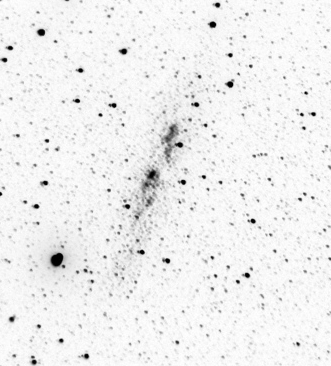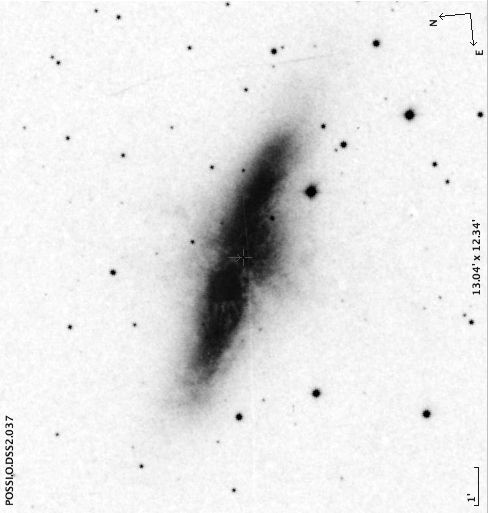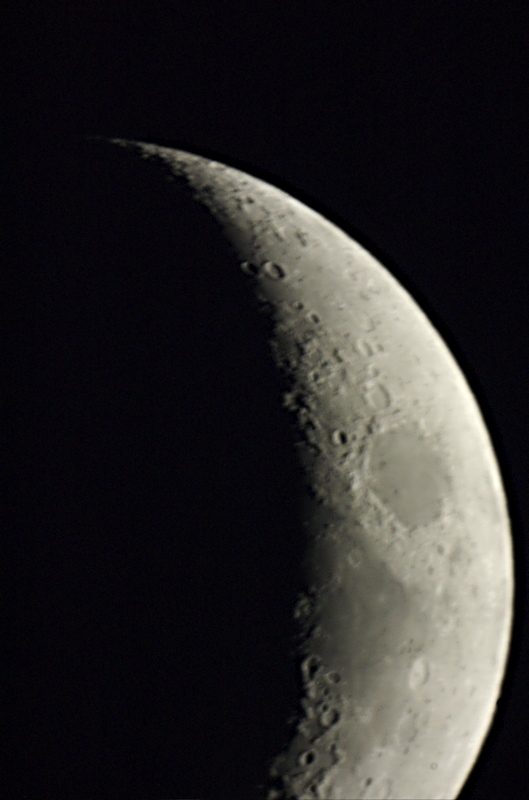
I took these pictures with my Nikon D50, at ASA 1600 in raw mode. All are heavily binned and cropped. One of the things I learned from last night's work is that the mirror in the D50 will cause vibrations when it flips out of the way. I think this is why my attempts to take pictures of the Moon at prime focus turned out to be blurred ...
Raymond Pastore's C11 provided a nice view of the Moon at prime focus, with a 1/125 second exposure.

All the remaining pictures were taken with a Meade LX-200 8-inch telescope at prime focus, with a StellaCam III integrating video camera. Most of the images represent 4 seconds of integation by the StellaCam.
You can see much better views of the MallinCam's images by looking at a digitized version of a VHS tape taken last night. Beware -- it's 22 MB, even after I shrank it to half the original size.
download an AVI copy of the MallinCam video (22 MB)
We recorded some of the video output from the MallinCam onto VHS tape last night, and Dick digitized the tape the next morning. I've grabbed a few frames from the digitized tape -- they show the MallinCam's performance much better than my "Nikon screengrabs" further below.
Globular cluster M13:

Double star epsilon Lyrae, with separations of 2.3 and 2.6 arcseconds.
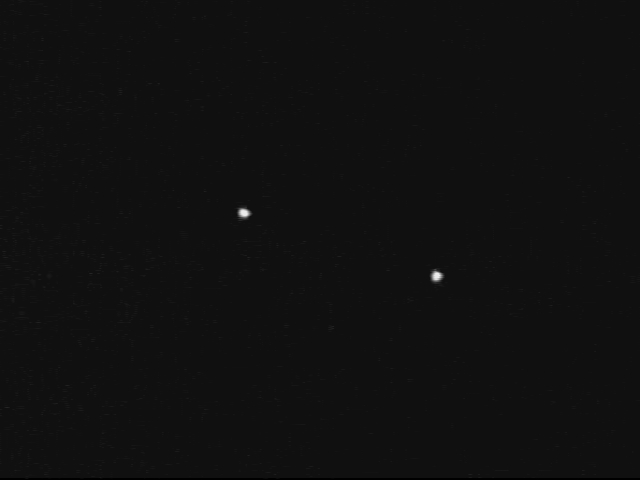
The Ring Nebula, M57:
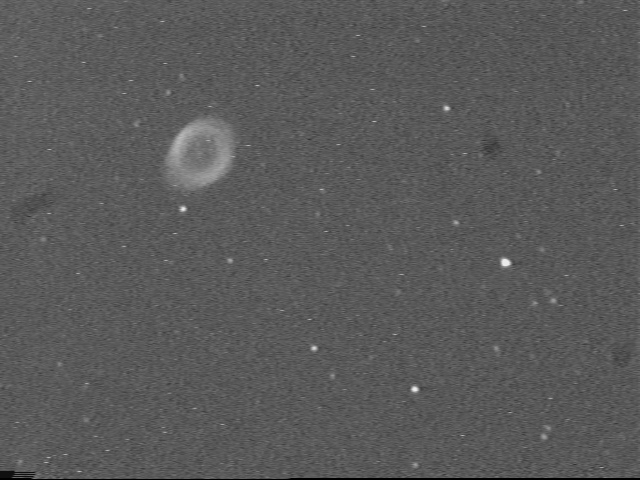
Globular cluster M5:

All the following versions of MallinCam images were taken in silly manner: the video output from the MallinCam was sent to a 15-inch TV screen. I pointed my camera at the screen and just took pictures. So, you are seeing the result of digital-analog-digital processing :-/
Many pictures of the waxing crescent Moon ...





M82, an edge-on peculiar galaxy in Ursa Major.

M13, a globular cluster in Hercules.

M27, the Ring Nebula in Lyra, at high contrast ...

... and at low contrast.

M5, a globular cluster in Serpens.

Compare the image of M57 taken last night to an image of M57 taken by the 2MASS infrared sky survey in the J-band. I smoothed the M57 image with a gaussian of FWHM=3 pixels. You can get your own copies of 2MASS images from the Aladin tool.
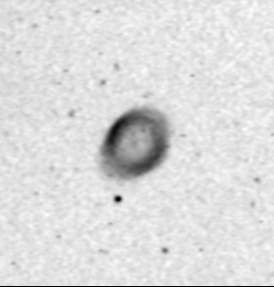
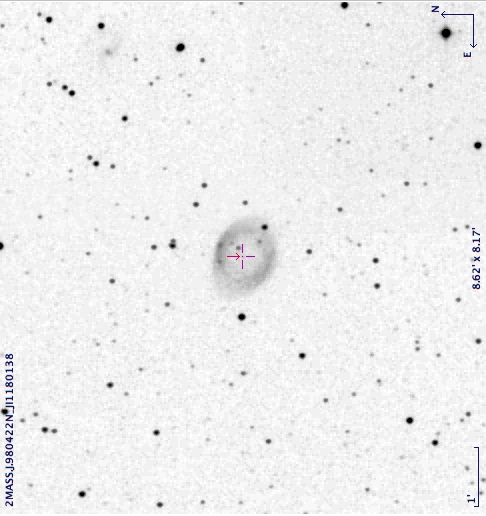
I've done a bit of modification to the image below; I smoothed it with a gaussian filter of FWHM = 3 pixels to reduce artifacts from the TV screen on which it was displayed. If we look closely at this smoothed image, we can separate the real stars from the hot pixels in the camera. I've circled three real stars. Their magnitudes are (from the USNO B1.0 catalog, via Aladin)
star Bmag Rmag --------------------------------------- A 13.4 11.7: B 14.9: 13.8: C 15.2 13.8
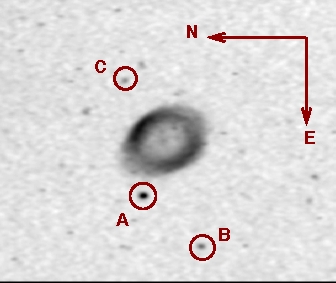
Compare the image of M82 taken last night to that from the POSS II sky survey.
